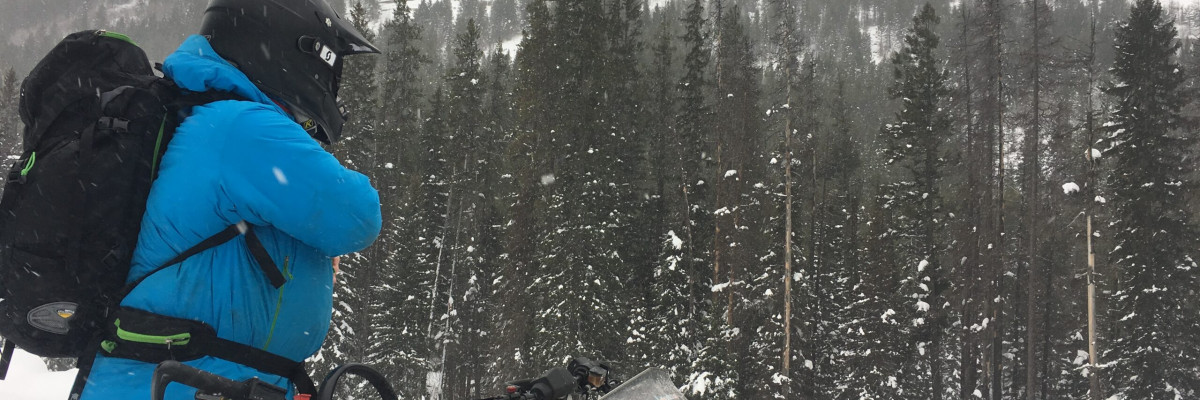The current avalanche danger is CONSIDERABLE in the west central Montana backcountry on steep (>35 degrees) wind loaded slopes. On all other slopes the danger is MODERATE. This means careful snowpack evaluation, cautious route-finding and conservative decision-making are essential to recreate today.
Good morning, this is Travis Craft with the West Central Montana Avalanche Center’s avalanche advisory for December 20, 2016. This danger rating does not apply to operating ski areas, expires at midnight tonight and is the sole responsibility of the U.S. Forest Service.
Weather and Snowpack
Mountain temperatures range from 18 F to 28 F in the region. In the Bitterroot winds are 9 mph with gusts of 13 out of the SSE and Point Six, in the northern part of the advisory area, winds are reading at 3 mph with gusts of 12 mph out of the SE. The forecast area received 1 to 3 inches of new snow in the last 24 hours. The SWE totals are .3 to .6.
We took sleds into the Twin Lakes in the central Bitterroot. We observed some localized cracking and wind loading of leeward slopes. We were able to get the basal facets to propagate in our ECT’s at the ground. Yurtski in the southern Swan also found these facets near the yurts and were not able to get propagation on them.
The first avalanche problem is wind slabs. These wind slabs have been deposited on a poor snowpack structure. With todays predicted high winds and new snowfall expect these slabs to grow in size.
The second avalanche concern is the persistent slab releasing at the ground. The basal facets are located throughout the advisory area. Dig into the snowpack and see if these facets propagate. Also pay attention to bullseye data.
The final problem are storm slabs. These slabs of heavier snow have been deposited on lower lighter density snow. See Video
Avalanche and Weather Outlook
It is currently snowing. The mountains are predicted to have over a foot of heavy dense snow accompanied by high winds (50 mph). With the addition of new snow and high winds expect the avalanche danger to increase rapidly. Conditions can change quickly especially with the poor snowpack structure and additional loading by the wind.
Logan will issue the next advisory on Thursday December 22, 2016.
Ski and ride safe.














